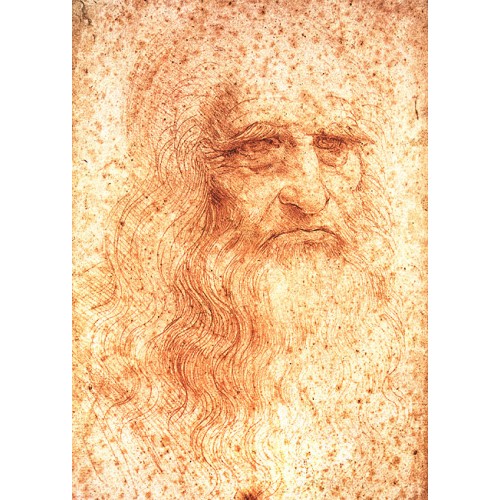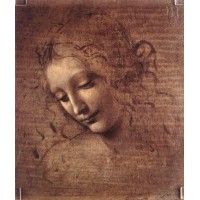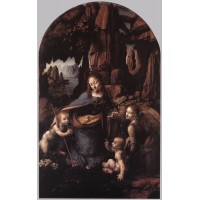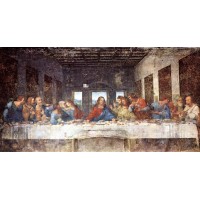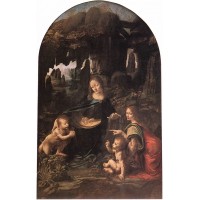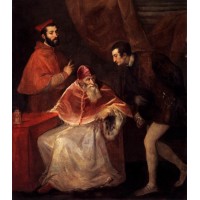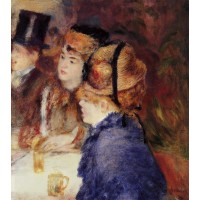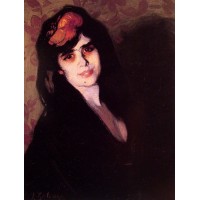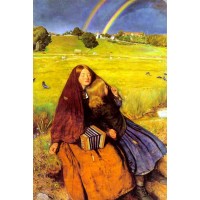Self Portrait
- Artist: Leonardo da Vinci
- Categories: Figure painting, Man painting, Renaissance-High,
- Product Code: leonardo da vinci 19
Available Options
Leonardo da Vinci, near Florence, in 1452, commenced his career in the 1460s in the Florentine workshop of the painter and sculptor Andrea Verrocchio. Around the middle of the seventies he painted the Portrait of Ginevra Benci (National Gallery, Washington), a picture that recalls the Lady with Primroses, a marble sculpture by Verrocchio now in the Museo Nazionale del Bargello in Florence. In 1481 Leonardo started work on the Adoration of the Magi for the church of San Donato a Scopeto, now in the Uffizi and left incomplete because in 1482 the famous artist left Florence for the court of Ludovico it Mo-ro in Milan. He was to remain there for eighteen years, during which time he worked in the most diverse fields: as a painter, sculptor, architect, city planner, civil and military engineer, organizer of official ceremonies and creator of temporary structures for festi-vals and stage sets. In 1483 he signed a contract with the confraternity of Santa Maria della Concezione for the execution of the Virgin of the Rocks. He would paint two versions of this, one now in the Louvre, in Paris, the other in the National Gallery of London. Perhaps the most celebrated painting work of the Milanese period is The Last Supper, painted between 1495 and 1497 for the refectory of the monastery of San-ta Maria delle Grazie. It is not a fresco but a painting executed in an experimental technique using a special preparation on dry plaster, and it was not long before it began to deteriorate.
Following the fall of Ludovico il Moro in 1499 and the occupation of Milan by the French, Da Vinci went first to Isabella d'Este in Mantua, then on to Venice and finally returned to Florence. In the church of the Santissima Annunziata he showed a cartoon depicting Saint Ann with the Virgin, the Child and the Infant Saint John, and Vasari describes the reception it received in the city as follows: " in the room, men and women, young and old, flocked to see it for two days, as if it had been a festival, and they marveled exceedingly." The Medici were absent from Florence, having been driv-en out of the city in 1494, and in 1503 the republican government commissioned him to decorate one wall of the Salone del Gran Consiglio in Palaz-zo della Signoria with The Battle of Anghiari, at which the Florentines had defeated the Milanese troops of Filippo Maria Visconti in 1440. The fresco painting was supposed to have been set opposite painting of Michelangelo the Battle of Cascina, but for various reasons, neither of the works were finished: the two famous artists abandoned the city, leaving behind a few preparatory drawings which were to influence the art of generations of artists to come.
In 1506 Da Vinci went back to Milan at the invitation of the French governor Charles d'Amboise and devoted himself to studies of anatomy, botany, geophysics and engineering. In 1513, following the return to power of the Sforza dynasty, he left Milan to settle in Rome, under the protection of Giu-liano de' Medici. The role of painter was now overshadowed by that of the man of science, while the artistic scene in Rome was dominated by Michelan-gelo and Raphael. In 1516, after the death of Giuliano de' Medici, Leonardo accepted an invitation from King Francis Ito come to France and moved to Cloux, near Amboise. He took with him the Mona Lisa, the picture probably painted during his last stay in Florence that perhaps illustrates better than any other the expressive possibilities of sfumato, the subtle and gradual passage from shade to light that creates an illusion of depth and slowly brings the forms out of a darkness steeped in mystery. Leonardo died at Cloux in 1519.
China Oil Painting Gallery supply Self Portrait of Leonardo da Vinci by customer sizes. 100% hand painted museum quality painting reproduction on canvas for sale . We can paint by any size. If you need a customer size that out of above list, please contact with us.

